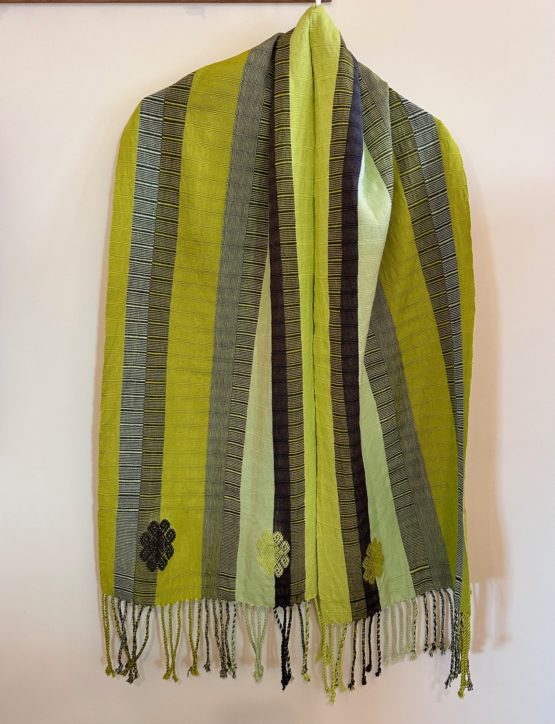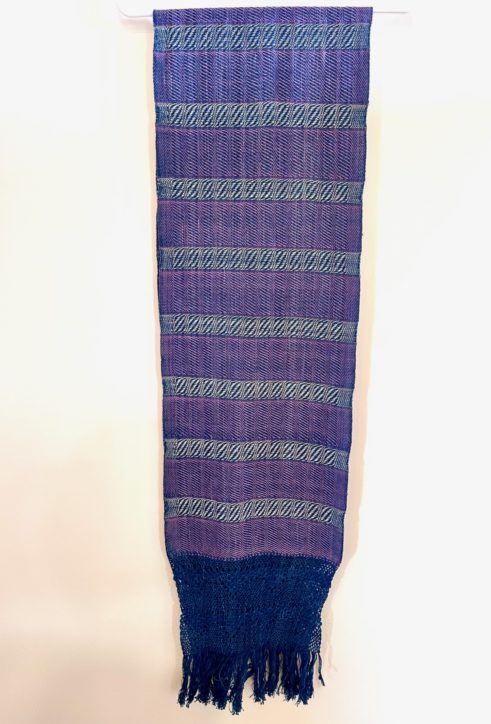The Zocalo is filled with light, people from throughout Mexico and around the world, balloons, itinerant vendors, strolling musicians. The atmosphere is festive, celebratory, one of relief, for this is a different year than last and people are thankful. Tourists are returning, the Zocalo is alive, a 30 foot Christmas tree is studded with white lights, there are noche buena (poinsettias) everywhere, and ringing the Zocalo is the display that attracts crowds who stand in line for 5 and 6 blocks ringing the area to see ancient tradition of carving radishes. They are sliced, shredded, carved in stars and circles as if a chef were preparing a totally radish dinner.
They are stuck together with toothpicks and wire to create nativity scenes, farmers plowing fields atop oxen driven carts or mechanical plows, dancers at the Guelaguetza, musicians plucking guitars and blowing horns and beating drums. The radish carvers, mostly from the campo (the country) near Ocotlan, stand sentry making sure that no one disturbs their creations, frequently spraying water from pump bottles to keep wilting leaves and red radish skin fresh and shiny. The winner of the best carved scene will win $10,000 USD, a princely sum. We are sitting up above the crowd on the second floor in the white table clothed El Asador Vasco, twelve of us, Zapotecs and gringos, when the winner is announced. An immediate shower of white firecrackers cascade like a waterfall from the top floor of the government building to herald our attention that there is a winner; it is a solid wall of twinkling light that goes on for about 5 full minutes, or so it seems. Everyone runs to the edge of the wrought iron railing to take photos, to ooh and ahhh, and to experience the glorious celebration. Then, near the Castillo (which is what everyone calls the Cathedral) another round of firecrackers goes off into the sky. It is about 10:30 p.m. and there is still a long cue waiting to circle the display of radishes that surround the Zocolo. The line won’t diminish until about 2 or 3 a.m. My sister says she was there at 11 a.m. and again at 3 p.m. when the crowds were few, there was no wait, and she could see the people doing the carving and setting up. By 7 p.m. the line began the snake and the wait was at least 2-3 hours. One trick is go into the Zocalo from behind the display to avoid the wait, which is what I did. I didn’t get to see the full view, but could get a good sense of the carvings and some of the detail. Along one end of the U-shaped promenade is where people fashion corn husks into flowers, dioramas of the nativity, and a multitude of fanciful decorations that one can buy to take home. It’s much easier to see and buy from the “back” than from the promenade side of the display.
The food and ambience at El Asador Vasco, which is above El Jardin, is great and reasonably price. We had a seafood soup from the Isthmus, house wine, entrees, dessert and beverages for 12 people and the total bill including tip was a tad over $200 USD. The meal was leisurely over almost three hours, and we were entertained by a group of strolling Mexican minstrels with guitaron, mandolin, twelve-string guitar, six-string guitar, tamborine, and pandero (a percussion instrument). Their voices were clear, strong and beautiful. The group leader knew Federico from when Fede was on the school committee in Teotitlan and the leader taught school there.It was after midnight when we got back to the pueblo and we didn’t wake up until 10 a.m. on December 24. Tonight, we are celebrating with a big dinner for 12 at home hosted by Dolores and Federico. The table is decorated with succulents from Benito Juarez that we got at the village market this morning, corn husk flowers that I bought at La Noche de los Rabanos last night, and small votives. Our meal will include green corn sweet tamales fresh made in the village, a potato salad mixed with pineapple chunks, onions, green and red peppers and mushrooms, ponche (punch made with guava, raisins, manzanitas–little apples, sugar cane, canela-cinnamon, panela–sweet Oaxaca chocolate, and pastel de chocolate with mocha, champagne y vino y cerveza Noche Buena and Modelo Negro y Claro. The guests are arriving.










December Holidays in Oaxaca
Winter holidays – during the Christmas season and through the New Year – are a perfect time to visit Oaxaca (Wah-Ha-Kah). The daytime sun is warming and the evening chill is perfect for strolling wrapped in a hand woven robozo (shawl). Festive, brightly colored cut paper flags hang from the tops of buildings and drape across narrow cobblestone streets. Glorious deep cardinal red Buena Noche (red poinsettia) are planted like a carpet throughout the beds of the Zocalo and adorn the arched entry doors of village houses. Doorways are draped in ribbon and twinkle with electric lights.
December 12: Fiesta de la Virgen de Guadalupe
This annual celebration is held throughout Mexico, but in Teotitlan The Dance of the Feather is performed during this day in the church courtyard to celebrate Guadalupe´s anniversary.
December 15-23: Posadas in Teotitlan del Valle
In Teotitlan de Valle, the faithful join daily evening posadas that wend their way through the narrow streets and alleyways of villages, following a band that plays Sousa-like marching music and church elders who carry the Virgin, swinging copal incense and select men and women balancing hand-rolled beeswax candles to light the way. Each year nine families are chosen to host the Virgin Mary on each of the nights before Christmas eve. Each night represents the nine months of Guadalupe’s pregnancy. The processionals are led by the hosting family carrying sculptures of Jose (Joseph) and Maria (Mary) through the main streets of the village before delivering them to the next posada house. Each host family invites relatives and friends to celebrate the honor with them, and the revelry continues through the night with songs, prayer, music, food and drink. On the last night, the Ultimate Posada (La Posada Ultima) is the most special for the chosen family because they become godparents to the birth of Jesus, who appears in the creche that night to join Joseph and Mary.
December 23: La Noche de los Rabanos (Night of the Radishes)
These are giant red horseradishes grown on farms in the Ocotlan region of Oaxaca, carved into dioramas depicting religious and village life – imagine it and there will be a radish carved to look like it. The lines start to form around the Zocalo at around 4 p.m. and can extend for 12 square blocks. People come from throughout the state of Oaxaca and tourists descend from around the world. The outdoor cafes surrounding the Zocalo are packed and it is difficult to find a seat – squatters arrive early and never get up. People are careful to eat and drink very slowly. There is a raised platform walkway that funnels viewers around the periphery of the staging and display area. Throughout the night, the radish carvers wield big squirt bottles of water to freshen their displays to prevent wilting. The Grand Prize is $10,000 USD!
We like to get there early, around mid to late afternoon, when there are fewer people so we are there as the final carving is being done and the finishing touches are put on – a hat placed on a radish head, a hoe fixed with a toothpick into the hand of a radish farmer, a cross tilted to just the right angle in the arm of a radish priest. Last year, we got to the Zocalo too late, and found snaking lines that had no end, so we crossed through the line and entered into the center of the plaza, able to see a rear view of what was going on, craning our necks to get a glimpse of the radish scenes before us. It was fun to talk to the farmers this way.
December 24: Christmas Eve in Templo Santo Domingo
The gold altar of Santo Domingo Church is never more resplendent than it is on Christmas Eve. If you are going to midnight mass, be certain to arrive and get a seat by 10:30 p.m. otherwise it is standing room only in the back of the church. Overflow is outside the church doors in the chill December air. The entire service is in Spanish and it is punctuated with responsive reading and choral music.
Christmas eve is celebrated in Teotitlan just like everywhere else in Mexico.
December 25: Parade of the Buses
Yes, this is a day off for the bus drivers, who bring their families with them to the city to ride in the parade. Bus drivers own their own buses, and they come from all the surrounding villages to participate. The buses are festooned with flowers, crepe paper, and all sorts of holiday decorations. Family members smile and wave – they remind me of the floats in the Rose Parade. A posada of buses. A sight to behold.
No one works on Christmas day; it is a time to visit with family.
December 31: Las Cuevitas– Pedimento
Teotitlan villagers walk up to the “pedimento” which they call cuevitas because there are several little caves around this hill. Folklore has it that an image of the Virgin of Guadalupe was found here and it is considered a sacred place. People stay overnight to receive the new year here and believe that if you ask for anything you want on January 1st, it will come true during the year.
In Oaxaca City on December 31, families usually have a big dinner together to receive the new year. At midnight, 12:00 a.m., they eat 12 grapes and ask for 12 wishes.
January 1: New Year in Teotitlan del Valle
The entire village goes by foot or car or tuk-tuk (moto-taxi) to the holy area just outside the village in the foothills that is dotted with caves. There is a grotto there to make an offering of prayers for a healthy and happy new year. The tradition is to bring a picnic and gather up stones from the landscape, build a dream house, make a wish, and the dreams will come true. The first year that we went, we were the only non-indigenous participants. In recent years, we have seen more visitors participating with local Zapotec community members in the ancient celebration.
Like this:
Comments Off on December Holidays in Oaxaca
Posted in Cultural Commentary, Oaxaca Mexico art and culture, Teotitlan del Valle
Tagged Christmas in Oaxaca, holidays, La Noche de los Rabanos, las cuevitas, New Year in Oaxaca, Posadas, Radish Festival, Santo Domingo church, Teotitlan del Valle, winter in Oaxaca